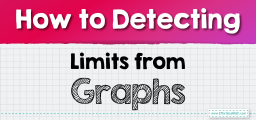How to Graphing the Floor Function
The world of mathematical functions is a vast canvas, sprinkled with intriguing patterns and nuanced structures. Among these, the floor function stands as an embodiment of non-continuous elegance. It offers steps of integer values, creating a unique visual representation in the Cartesian plane. This guide endeavors to elucidate the complex process of graphing this majestic function with meticulous precision.

Step-by-step Guide to Graphing the Floor Function
Here is a step-by-step guide to graphing the floor function:
Step 1: Setting the Stage – Recognizing the Floor Function
- 1.1. Essence of the Floor: At its heart, the floor function \(⌊x⌋\) captures the greatest integer not exceeding \(x\). In layman’s terms, it pushes a number down to its closest left integer, whether it’s a whole or a fraction.
- 1.2. Visual Cue: Think of the floor function graphically as a series of ascending stairs (albeit possibly infinite in both directions) where each step corresponds to a whole number value.
Step 2: Charting the Terrain – Basic Graph of \(⌊x⌋\)
- 2.1. Discrete Points: For every integer ‘\(n\)’, \(⌊n⌋\) equals ‘\(n\)’. This produces points like \((0,0), (1,1), (-1,-1)\), etc.
- 2.2. Intervals: Between two integers ‘\(n\)’ and ‘\(n+1\)’, \(⌊x⌋\) remains ‘\(n\)’. Thus, for values between \(0\) and \(1\) (non-inclusive), the floor value remains at \(0\).
- 2.3. Sketching: Join the interval ends using horizontal line segments. Remember, the right endpoint of each interval is open (often represented by a small circle) to avoid double-counting.
Step 3: Embellishing the Basic Sketch – Modifications & Transformations
- 3.1. Vertical Shifts: If \(k\) units are added, lift the entire graph vertically by \(k\) units.
- 3.2. Horizontal Shifts: A term ‘\((x-b)\)’ shifts the graph b units to the right if b is positive and to the left if negative.
- 3.3. Stretches and Compressions: A multiplicative factor ‘\(a\)’ outside the floor function stretches the graph vertically, while a factor inside affects the horizontal aspect.
- 3.4. Reflections: A negative sign can invert the graph either vertically (outside) or horizontally (inside).
Step 4: Piecing It All Together – Complex Floor Functions
Given a function like \(f(x)=a⌊bx+c⌋+d\):
- 4.1. Start with the basic \(⌊x⌋\) graph.
- 4.2. Apply horizontal transformations (shifts, stretches, compressions, reflections) governed by the inner terms.
- 4.3. Implement vertical transformations (shifts, stretches, compressions, reflections) dictated by the outer coefficients.
- 4.4. Ensure continuity points (jumps) remain at integers unless shifted horizontally.
Step 5: Polishing the Graph – Finessing the Details
- 5.1. Range Markers: Highlight integer steps with short vertical strokes to accentuate the stair-step nature.
- 5.2. Open Points: Emphasize open endpoints with hollow circles to denote non-inclusive intervals.
- 5.3. Labeling: Label a few specific points for clarity, ensuring viewers can discern the pattern.
Final Words
The floor function, while seemingly straightforward, unravels layers of intricacy when delved into. Graphing it demands an appreciation for its step-like behavior and the cascading impact of transformations. With patience and practice, one can master the art of sketching this function, offering a visual treat that is both enlightening and intriguing.
Related to This Article
More math articles
- How to Use Parallelogram Rule for Vector Addition and Subtraction
- Algebra Puzzle – Challenge 32
- 7th Grade CMAS Math Worksheets: FREE & Printable
- Full-Length ACT Math Practice Test-Answers and Explanations
- 10 Most Common 7th Grade Georgia Milestones Assessment System Math Questions
- 4th Grade MAP Math Worksheets: FREE & Printable
- 8th Grade MAP Math FREE Sample Practice Questions
- CBEST Math FREE Sample Practice Questions
- Full-Length 7th Grade PARCC Math Practice Test-Answers and Explanations
- How to Construct the Incircle of a Triangle






















What people say about "How to Graphing the Floor Function - Effortless Math: We Help Students Learn to LOVE Mathematics"?
No one replied yet.